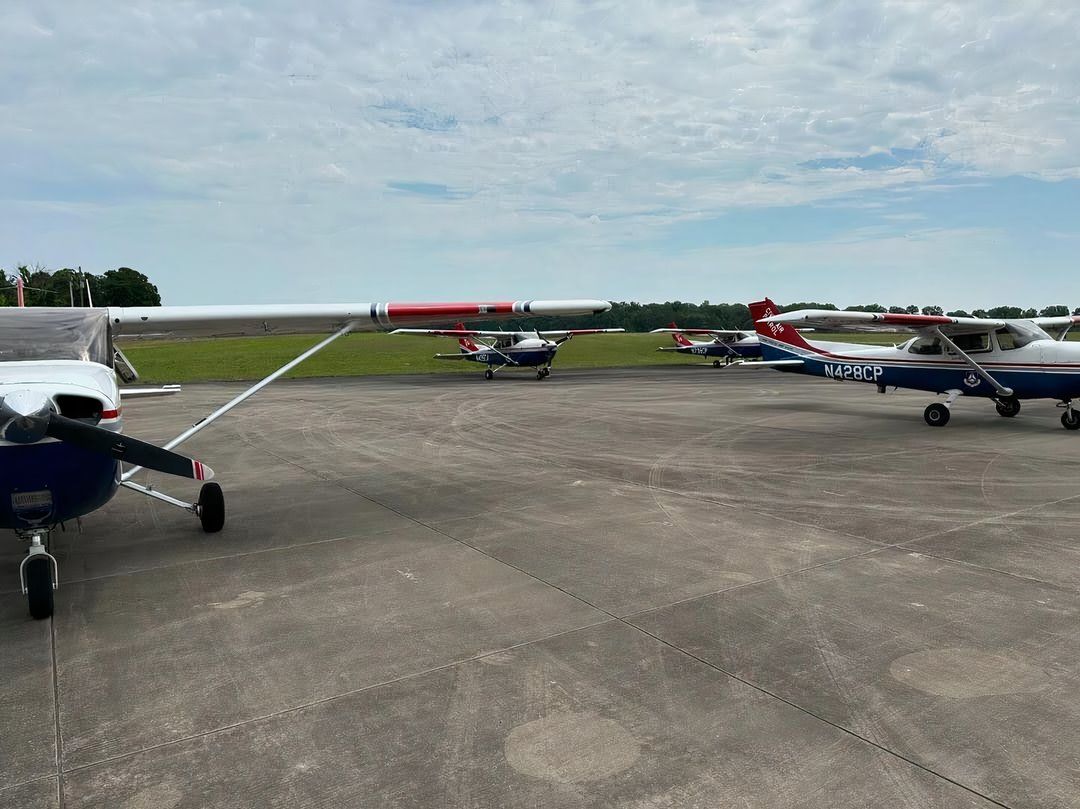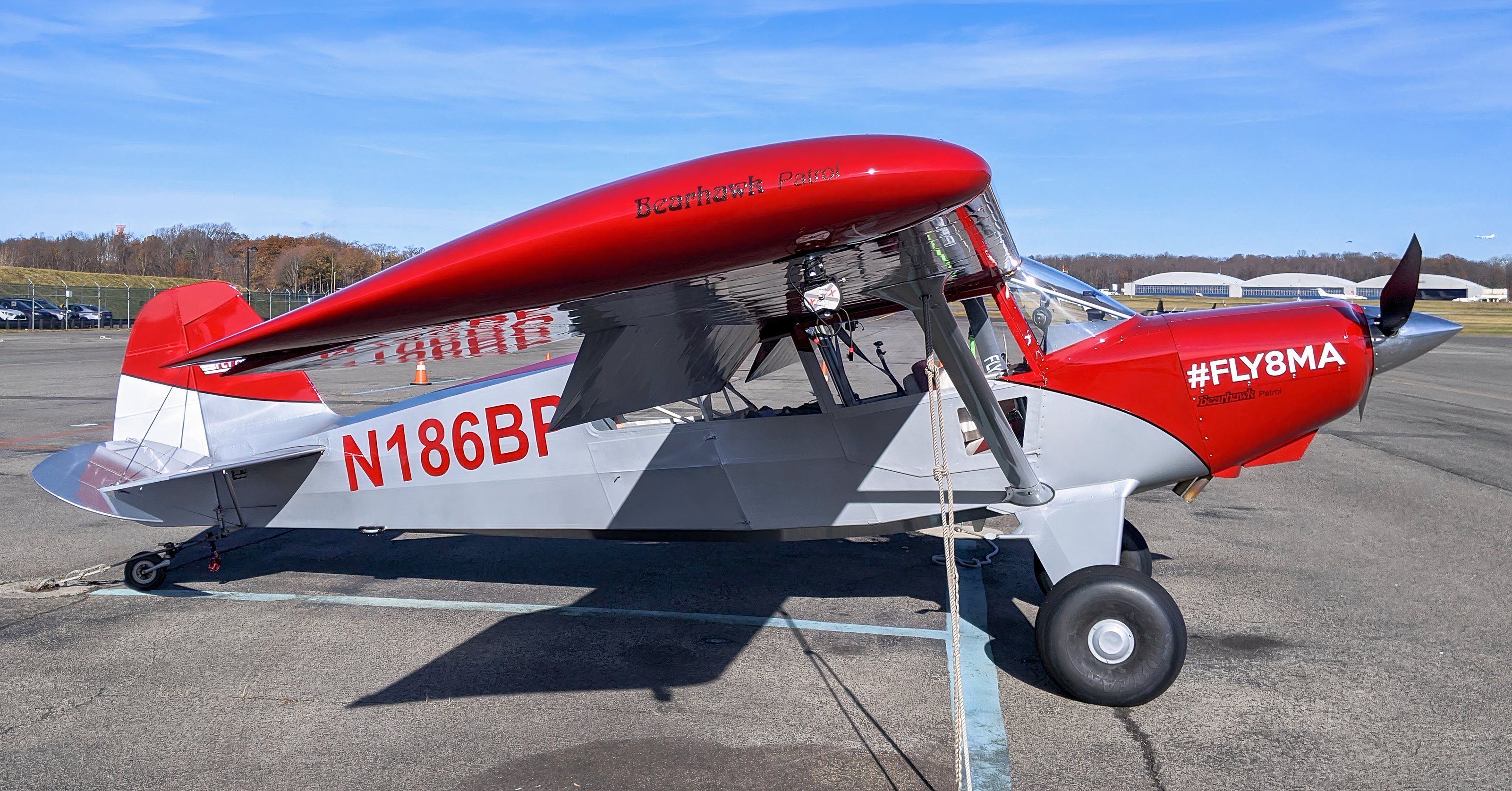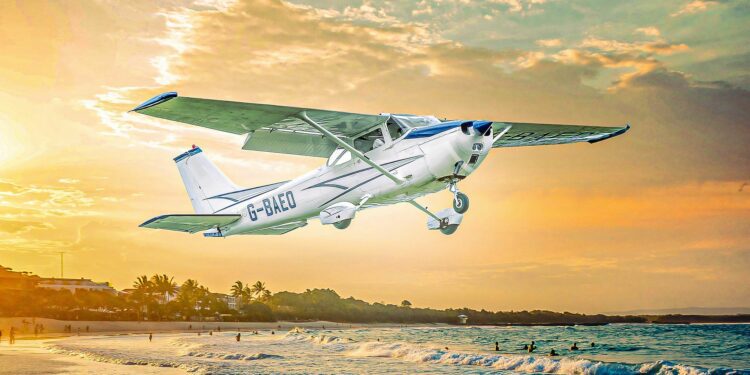Photo: 2d Lt Marc Sternagel
But what if you could explore the world in your own airplane? Australian recreational pilot, YouTuber, and adventurer Stefan “Stef” Drury does just that with his 2007 Cirrus SR-20 G3 registered as VH-EYZ. He shares,
Being able to fly to any airport you choose, at any time you like, in an aircraft that is under your own command, is probably the greatest freedom you can ever experience. IтАЩve seen parts of this planet through recreational aviation that I never would have been able to otherwise – flying around Uluru, over the icecaps of Greenland, into remote grass strips in Italy, over meteorite craters in the Australian outback, or low level around the British coastline. Recreational aviation gives you a unique perspective on the planet that only a small, very lucky, amount of people ever get to experience.
Of course, recreational flying doesn’t require pilots to travel far and wide to reach their destinations. Some pilots prefer to overfly their homes, schools, or neighborhoods.
Second Lieutenant Sternagel likes recreational flying because it makes more places accessible.
Flying is all about the destination. As a private pilot, you have the unique opportunity to go to places not easily accessible for others. The other day I took a flight to a small strip in Western Tennessee. This is as close as it gets to backcountry flying in Alaska. The runway was tucked in between trees and the countryside was simply beautiful. We ended up having lunch at a local burger joint which seemed like we travelled in time. I was once told to always fly to new fields to stay sharp and to learn to deal with new environments. I highly encourage recreational flyers to find these little treasures on the chart.
Speaking of burgers, Flying Magazine recommends pilots download the SocialFlight app to explore new airfields. The app has a feature that helps pilots find airports with restaurants and other activities. Don’t worry, you won’t be flying to get the infamous “$100 burger” every time!
Suggested airplanes
The general aviation sector is saturated with a wide variety of aircraft that can be used for recreational flying. Ultimately, the aircraft choice comes down to the pilot’s proficiency and type of mission.
High-wing aircraft currently being manufactured, such as the Cessna 172 Skyhawk, Cessna 182 Skylane, or Tecnam P2010, are great for sightseeing below the aircraft. Second Lieutenant Sternagel usually flies the 172 and 182. The high wings allow him to enjoy views like an elephant sanctuary that’s not open to the public on the ground.

Photo: 2d Lt Marc Sternagel
Low-wing aircraft like the Beechcraft Model 36 Bonanza, Cirrus SR series, Diamond DA40 Diamond Star, and Piper PA-28 series, are well-suited for flying over sceneries that are generally level or slightly higher than the aircraft.
Several high-wing aircraft currently being manufactured can be equipped with pontoons for landing on water. Examples of light-sport amphibious aircraft that don’t need floats include the Dornier Seawings DS-2C, Icon A5, Seamax M-22, and Super Petrel XP. These aircraft demonstrate versatility by being capable of taking off and landing on both water and solid runways. Some aircraft, such as the A5, are equipped with foldable wings for transportation on the road using a trailer. This video, courtesy of @flytheicon on Instagram, highlights some of the perks of having a small amphibious aircraft.
Tailwheel (or taildragger) aircraft are popular for backcountry flying due to their slow speeds and shorter take-off and landing distances. Some of the popular taildraggers currently being manufactured include the Aviat A-1B Husky, Bearhawk Patrol, CubCrafters Carbon Cub Series, and Kitfox Speedster, STi, and Super Sport. Additionally, Zenith Aircraft Company offers several aircraft suitable for backcountry flying with a tricycle landing gear configuration.

Photo: Noah Cooperman | Simple Flying
Rotorcraft allow minimal sight obstruction and can land almost anywhere, including places where airplanes cannot. The Robinson R22 Beta and R44 Cadet, currently being manufactured, are good choices for pilots interested in flying a recreational helicopter.
The sustainable future
Flying a small airplane offers thrills and conveniences, but there are also drawbacks, such as cost, weather, and negative environmental impact. While it can be amazing to fly over glaciers, the hot, carbon-filled exhaust from the aircraft contributes to the warming of the planet and the melting of the frozen glaciers. Additionally, the noise from the propellers can scare off wildlife. Thankfully, there are measures to help reduce the carbon and noise footprint of recreational flying.
To reduce a piston plane’s carbon footprint, you can lean the mixture as far back as possible, use unleaded avgas, and try to fly the most modern aircraft. It’s important to check with the aircraft’s manufacturer and follow the operating standards.
An alternative is to consider learning to fly an electric airplane. Pipistrel Aircraft offers the Velis Electro, a high-wing two-seater plane with 50 minutes (plus VFR reserve) of 100% electric flight time. As of this article’s publishing, the Alpha Electro (pictured) and Velis Electro are the only fully electric personal airplanes on the market.
Electric sailplanes are also suitable recreational aircraft with low overall carbon emissions; just don’t expect to go very far, unless you know how to properly harness thermal columns.
Final thoughts
Recreational flying offers a unique and liberating perspective on the world. Whether you’re exploring remote landscapes, witnessing breathtaking sunsets, or simply enjoying the thrill of flight itself, the experience is truly unforgettable. As Stef eloquently puts it, “ItтАЩs knowing that what youтАЩre looking at out of the window is unique to you in that moment.
All the hard work you put into your flight training, all the exams you sat, all of the time and money you invested into this unique hobby are worth it when you get to see parts of this world in a way that youтАЩd never be able to otherwise.” So, if you’re seeking adventure, freedom, and a truly one-of-a-kind experience, consider taking to the skies and embarking on your own recreational flying journey.
Source link : http://www.bing.com/news/apiclick.aspx?ref=FexRss&aid=&tid=66fa07780c2543d393a90fe359a99ae6&url=https%3A%2F%2Fsimpleflying.com%2Fsmall-aircraft-flight-experience%2F&c=12106241215278322442&mkt=en-us
Author :
Publish date : 2024-09-29 15:04:00
Copyright for syndicated content belongs to the linked Source.












